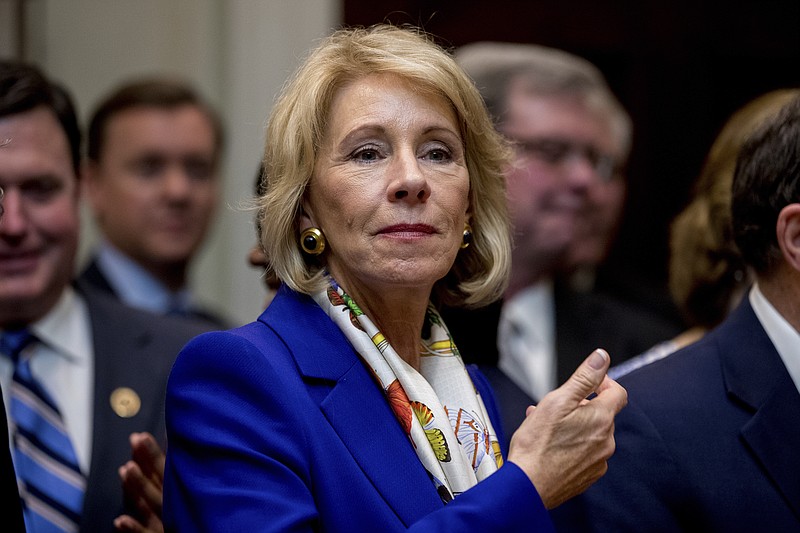WASHINGTON (AP) - Pell Grants have been a fixture of federal financial aid since the 1970s, helping about 8 million low-income students attend college each year.
Education Secretary Betsy DeVos is now considering allowing students to use the grants year-round, rather than just for two semesters in any given year. She raised the possibility during a visit last week to a community college in Florida.
A look at the program, its past and its future.
___
WHAT ARE PELL GRANTS?
Pell Grants are a federal aid program aimed at helping low-income students fund post-secondary education, including four-year college programs, community colleges, associate degree and certificate programs. Currently, Pell Grants benefit some 8 million students across the country and the maximum annual grant is about $5,800. Funded at around $29 billion a year, Pell Grants are a key tool for the federal government to fund college education for the disadvantaged.
The program gets its name from former Democratic Sen. Claiborne Pell of Rhode Island, one of its key champions.
___
YEAR-ROUND PELL GRANTS
Pell Grants have traditionally been used to fund a student's fall and spring semester studies. When the spring semester was over, the student had to reapply for the next academic year, which started in the fall. But as more and more students now opt for taking classes over the summer in order to graduate and get a job more quickly, there is demand for year-round Pell Grants, also known as summer Pells. "If someone who is eligible for a Pell Grant is going full time and wants to continue to pursue their education for the third semester, there is no good reason the program should not allow them to access another grant," said Jason Delisle, resident fellow at the American Enterprise Institute.
___
PELL EXPANSION
The Obama administration sought to expend Pell Grants even further. Last year, the Department of Education piloted a program that allowed some 10,000 young people who are attending high schools, but are also taking college-credit classes, to access $20 million in grants. The department also piloted the $30 million Second Chance Pell pilot program that lets 12,000 prison inmates enroll in post-secondary education courses at the correction facilities. The future of those programs is uncertain as the full budget proposal for next year has not yet been released.
___
BIPARTISAN SUPPORT
Historically, Pell Grants have enjoyed support on both sides of the aisle. Democrats favor Pell Grants because they mostly benefit the poor, while Republicans back them because they provide students with the flexibility to study at their own pace and graduate earlier. Year-round Pells existed briefly in 2009-2011, but were eliminated mostly due to funding shortages. Last year, Democrats and Republicans joined forces to introduce a bipartisan Senate bill on year-round Pell Grants, but the House blocked it. With DeVos now considering the measure, experts are cautiously optimistic that Summer Pells may be reintroduced. In a statement to the AP, Sen. Lamar Alexander, chairman of the Senate Health, Education, Labor and Pensions committee, called year-round Pell Grants "one of the most important things" that can be done for college students and vowed to make extending the program his priority. "We are more hopeful now about the possibility of reinstating year-round Pell Grants than we have been in five years," said Terry Hartle, senior vice president at the American Council on Education.
___
FUNDING
Hartle estimated that offering students the summer grant would cost an additional $2 billion per year and it is unclear where the money would come from, given that the Trump administration has proposed to slash overall Pell Grant funding by $3.9 billion in the next year's budget and an additional $1.3 billion this year. "It is at a very basic level a no-brainer," Hartle said. "The challenge is that there is a financial cost associated with it." Experts said that the necessary funding could come from either making fewer students eligible for the grants, or making the grants smaller or at the expense of some other program at the Education Department or some other agency. Patty Murry, the top Democrat on the Senate committee, said she is glad that DeVos will consider expanding Pell Grants, but she is unsure how that idea squares with the budget cuts proposed by the Trump administration.
